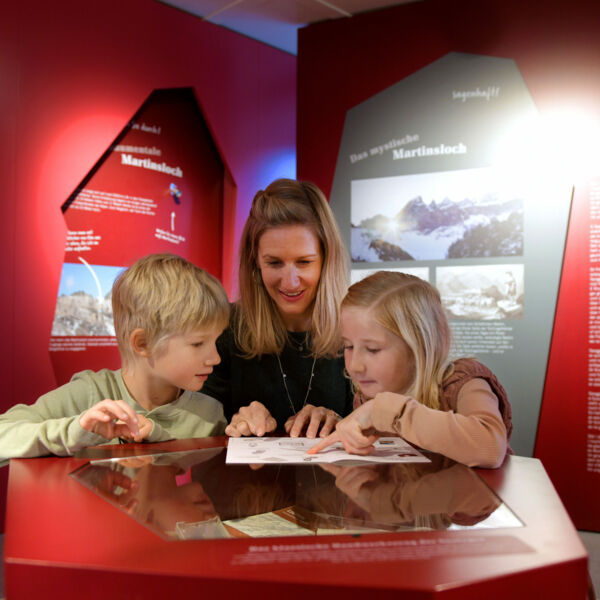Tektonikarena Sardona
Hier stehen die Berge kopf!
Die Gebirgslandschaft um den Piz Sardona
Die Tektonikarena Sardona erlaubt einzigartige Einblicke in die Entstehungsgeschichte der alpinen Berge und Täler.
Entlang der weit herum sichtbaren Linie, der Glarner Hauptüberschiebung, auch «magische Linie» genannt, schoben sich 250-300 Millionen Jahre alte auf viel jüngere, zum Teil «nur» 35-50 Millionen Jahre alte Gesteine. Dies geschah vor 10-20 Millionen Jahren weit unter der damaligen Erdoberfläche!
Das Gebiet hat grossen Wert für Schulen und die Forschung, da es Zeuge für die Gebirgsbildungsprozesse und die Plattentektonik ist. Seit über zwei Jahrhunderten erforschen Wissenschaftlerinnen und Wissenschaftler aus der ganzen Welt die Vorgänge der Gebirgsbildung. So lüften sie im Welterbe Sardona die Geheimnisse der Entstehung von Gebirgen.
Champions League der Naturwerte
Die Tektonikarena Sardona ist eine von nur 200 UNESCO-Weltnaturerbestätten und, geologisch gesehen, eine der spannendsten. Die weltweit höchste Auszeichnung für ein Naturgut bringt die Tektonikarena Sardona in die gleiche Liga wie der Grand Canyon (USA), die Galapagos Inseln (Ecuador) oder das Great Barrier Reef (Australien).
Weltweit einzigartig
Die Welterberegion Sardona ist weltweit einzigartig: nirgends sonst sieht man die Resultate der Vorgänge, die zur Gebirgsbildung geführt haben, so deutlich und monumental wie hier.
Alt auf jung – wie ist das möglich?
Bei der Alpenbildung wurden riesige Gesteinspakete aus ganz verschiedenen Epochen übereinandergeschoben. So konnten ältere Gesteine auf viel jüngere gelangen. Lange Zeit konnte man sich diese Verkehrtlagerung der Gesteine nicht erklären.
Naturschauspiel
Die Glarner Hauptüberschiebung ist gut zugänglich und eines der faszinierendsten Naturphänomene der Welt. Man erkennt die «magische Linie» sowie die 3-D-Ausprägung im Gelände sofort.
Epischer Streit der Forscher
Forscher müssen streiten! Die Forschungsresultate in der Tektonikarena Sardona, deren Geschichte bereits 200 Jahre alt ist, haben die Vorstellungen davon, wie die Alpen entstanden sind, revolutioniert – und revolutionieren sie noch heute.
Pilgerstätte für Wissenschaftlerinnen und Wissenschaftler
Noch heute pilgern Wissenschaftlerinnen und Wissenschaftler aus der ganzen Welt in die Welterberegion Sardona, um Merkmale, welche auf Prozesse der Gebirgsbildung hinweisen, vor Ort zu studieren, denn hier sind sie besonders gut sichtbar.
Grosse Geodiversität
Die Welterberegion Sardona verfügt über eine enorme Vielfalt an Gesteinen, Strukturen, Geländeformen und Landschaften. Diese bildet die Basis für die grosse Biodiversität.
Idealer Lebensraum für Pflanzen und Tiere
Die Gebirgslandschaft bietet gute Voraussetzungen für zahlreiche Tiere und Pflanzen, weil sie sich immer noch in einem sehr ursprünglichen Zustand befindet. Hier wurden 1911 die ersten der damals ausgerotteten Steinböcke in der Schweiz wieder angesiedelt. Auch für die erstmalige Auswilderung der stolzen Bartgeier in den Nordalpen boten die vielfältigen Landschaften des Welterbes Sardona beste Voraussetzungen.








